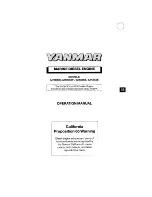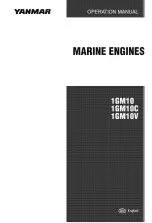
Section 5 - Maintenance
90-8M0099741
eng
JUNE 2015
Page 63
Appearance
Description
Cause
Solution
40795
Improper install
The belt ribs begin separating
from the joined strands. If left
unattended, the cover will often
separate, causing the belt to
unravel.
Improper belt installation is a
common cause of premature
failure. One of the outermost belt
ribs is placed outside the pulley
groove, causing a belt rib to run
without a supporting or aligning
pulley groove.
The belt life has been
severely limited and
should be replaced
immediately. Ensure all
ribs of the replacement
belt fit into the pulley
grooves. Run the engine.
Then, with the engine off
and battery disconnected,
inspect the belt for proper
installation.
40796
Misalignment
Sidewalls of the belt may appear
glazed or the edge‑cord may
become frayed and the ribs are
removed. A noticeable noise
may result. In severe cases, the
belt can jump off the pulley.
Pulley misalignment. Misalignment
forces the belt to kink or twist while
running, causing premature wear.
Replace the belt and
verify the alignment of the
pulley.
40797
Chunk
‑
out
Pieces or chunks of rubber
material have broken off the
belt. When chunk‑out has
occurred, a belt can fail at any
moment.
Chunk‑out can happen when
several cracks in one area move
parallel to the cord line. Heat, age,
and stress are the primary
contributors.
Replace the belt
immediately.
40799
Uneven rib wear
Belt shows damage to the side
with the possibility of breaks in
the tensile cord or jagged edged
ribs.
A foreign object in the pulley can
cause uneven wear and cut into
the belt.
Replace the belt and
inspect all pulleys for
foreign objects or
damage.
40800
Cracking
Small visible cracks along the
length of a rib or ribs.
Continuous exposure to high
temperatures, the stress of
bending around the pulley leads to
cracking. Cracks begin on the ribs
and grow into the cord line. If three
or more cracks appear in a
three‑inch section of a belt, eighty
percent of the life is gone.
Replace the belt
immediately.
NOTE: Minor, transverse cracks (across the belt width) may be acceptable. Longitudinal cracks (in the direction of belt length)
that join transverse cracks are NOT acceptable.
Checking
Inspect the drive belt for:
•
Proper belt tension deflection
•
Excessive wear
•
Cracks
















































